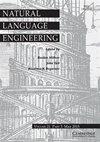从统一短语表示到无监督的双语短语对齐
IF 1.9
3区 计算机科学
Q3 COMPUTER SCIENCE, ARTIFICIAL INTELLIGENCE
引用次数: 0
摘要
摘要双语单词水平对齐取得了重大进展,但短语水平对齐仍然面临挑战。此外,对并行数据的需求是对齐任务的一个关键缺点。这项工作提出了一个缓解这两个问题的系统:一个使用跨语言单词嵌入作为输入的统一短语表示模型,以及一个受神经机器翻译最新工作启发的无监督训练算法。该系统由序列到序列结构组成,其中短序列编码器构建任何长度短语的跨语言表示,然后LSTM网络根据其上下文对其进行解码。在使用可比较的语料库和现有的关键短语提取进行训练后,我们的编码器提供了跨语言短语表示,无需进一步转换即可进行比较。在五个数据集上的实验表明,我们的方法在双语短语比对任务上获得了最先进的结果,并在MAP中将不同长度短语比对的结果平均提高了8.8分。本文章由计算机程序翻译,如有差异,请以英文原文为准。
From unified phrase representation to bilingual phrase alignment in an unsupervised manner
Abstract Significant advances have been achieved in bilingual word-level alignment, yet the challenge remains for phrase-level alignment. Moreover, the need for parallel data is a critical drawback for the alignment task. This work proposes a system that alleviates these two problems: a unified phrase representation model using cross-lingual word embeddings as input and an unsupervised training algorithm inspired by recent works on neural machine translation. The system consists of a sequence-to-sequence architecture where a short sequence encoder constructs cross-lingual representations of phrases of any length, then an LSTM network decodes them w.r.t their contexts. After training with comparable corpora and existing key phrase extraction, our encoder provides cross-lingual phrase representations that can be compared without further transformation. Experiments on five data sets show that our method obtains state-of-the-art results on the bilingual phrase alignment task and improves the results of different length phrase alignment by a mean of 8.8 points in MAP.
求助全文
通过发布文献求助,成功后即可免费获取论文全文。
去求助
来源期刊

Natural Language Engineering
COMPUTER SCIENCE, ARTIFICIAL INTELLIGENCE-
CiteScore
5.90
自引率
12.00%
发文量
60
审稿时长
>12 weeks
期刊介绍:
Natural Language Engineering meets the needs of professionals and researchers working in all areas of computerised language processing, whether from the perspective of theoretical or descriptive linguistics, lexicology, computer science or engineering. Its aim is to bridge the gap between traditional computational linguistics research and the implementation of practical applications with potential real-world use. As well as publishing research articles on a broad range of topics - from text analysis, machine translation, information retrieval and speech analysis and generation to integrated systems and multi modal interfaces - it also publishes special issues on specific areas and technologies within these topics, an industry watch column and book reviews.
 求助内容:
求助内容: 应助结果提醒方式:
应助结果提醒方式:


